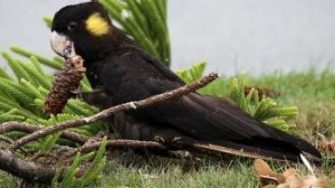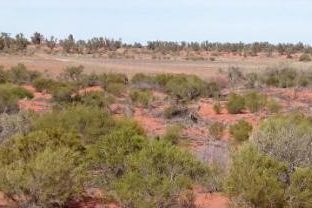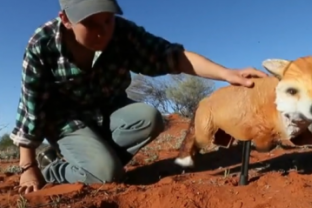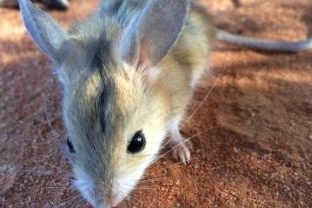
Important notice: This project has now been completed as a part of my honours year. The findings are likely to be published in 2018. Please continue to report your sightings (link below), as we hope to continue on with this research and find out more about this beautiful species!
I will be away overseas until February, so for any questions, queries or sightings, please email Dr John Martin at john.martin@rbgsyd.nsw.gov.au
You may have seen them slowly flapping in small to large flocks or heard their distinctive, loud call around Sydney. But what do we know about the Yellow-tailed Black-Cockatoo?
There are six species of Black-Cockatoo endemic to Australia. The Yellow-tailed Black-Cockatoo is one of the largest species and found from Central/South Eastern Queensland down to the Eyre Peninsula in South Australia. In recent years, there has been a significant decline in Yellow-tailed Black-Cockatoo numbers on the East Coast. Moreover, birds have begun to inhabit urbanised areas and forage on introduced pines. Around Sydney, Yellow-tailed Black-Cockatoos forage in bushland, parks and golf courses on pine cones and a range of native plants, including Banksia and Hakea seeds.
It's unclear whether such responses are adaptive or reflect resilience to habitat alteration. While some data are available, very little is known about the movements of Yellow-tailed Black-Cockatoos and the mechanisms driving their behaviour.
This study will investigate Yellow-tailed Black-Cockatoo movements around the Sydney region using GPS tracking technology. Additionally, diets will be investigated using isotopic analysis, given the probable importance of different types of foraging resources that drive the species' distribution. Overall, we have four main objectives:
- to identify key areas and habitat use by yellow-tailed black-cockatoos across the non-breeding and breeding seasons
- to identify habitat selection by female and male yellow-tailed black-cockatoos, and across non-breeding and breeding seasons
- to determine contributions of different potential food resources to yellow-tailed black-cockatoo diet using stable isotope analyses
- to engage citizen scientists to report sightings and behaviour.
This information is important for the long-term conservation of the Yellow-tailed Black-Cockatoo population.
How you can help:
There are few records of the natural history of Yellow-tailed Black-Cockatoos. Further, locations of populations, particularly in New South Wales, remain limited. If you have seen a bird or flock, or have any information relevant to this project, please help us by filling out the survey below:
Media Coverage: SMH Article: Rare birds: project tracks wild yellow-tailed black cockatoos for the first time.
Researchers: Jessica Rooke (Honours), Prof. Richard Kingsford, Dr John Martin, Dr Kate Brandis
Project sponsors: Centennial Parklands
Project partners: University of New South Wales, Botanic Gardens & Centennial Parklands
For more information, please contact: Jessica Rooke





